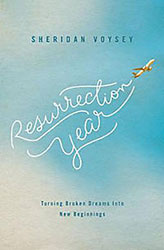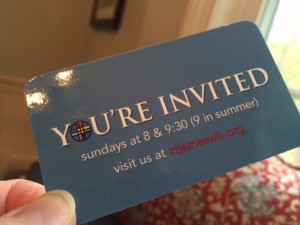Our Western cultural attitudes are not well-equipped for failure. We are a culture of optimists and fixers, holding fiercely to the notion that “pain is gain.” We want to believe that any problem can be overcome, any broken thing fixed, with hard work, a strong will, smart decisions, and hefty doses of modern technology. Christians can add earnest prayer and being “right with God” to the list.
Our faith in the potent combination of personal strengths and technological advances to help us overcome any difficulty is particularly apparent in modern reproductive decision-making. Couples facing infertility clean up their diets and their attitudes, agonize over why they are denied the gift of a baby (the implication being that if they can figure out why, then maybe they can fix whatever the problem is), try medications and yoga and acupuncture and relaxation techniques, turn to in vitro fertilization (IVF) and related technologies, and/or present a portfolio of qualifications to adoption agencies.
But what happens when we realize our problem might be unfixable? What happens when all those therapies and lifestyle changes and appealing adoption agency profiles and IVF cycles lead to nothing but the shattering realization that this particular dream is not going to come true? In his book Resurrection Year (Thomas Nelson 2013), Sheridan Voysey tells the story of what came next for him and his wife, Merryn, after they reached that heartbreaking conclusion.
 Sheridan Voysey was a well-known Christian writer and radio personality in his native Australia, and Merryn a medical statistician. For 10 years, after Sheridan was diagnosed with a low sperm count, they tried everything they could to have a child, including several rounds of IVF, opening a file with an adoption agency, and lots and lots and lots of prayer, both private and within various Christian communities. They hit their lowest point on Christmas Eve 2010, after having closed their file with the adoption agency to try IVF one more time. (Despite their adoption counselor’s assurances that they would be a very appealing couple for birth mothers, months went by without a single call.) Their final round of IVF led, at long last, to a positive pregnancy test. After sharing the news with thrilled family members, they went for an ultrasound, only to find an empty gestational sac where they expected a beating heart.
Sheridan Voysey was a well-known Christian writer and radio personality in his native Australia, and Merryn a medical statistician. For 10 years, after Sheridan was diagnosed with a low sperm count, they tried everything they could to have a child, including several rounds of IVF, opening a file with an adoption agency, and lots and lots and lots of prayer, both private and within various Christian communities. They hit their lowest point on Christmas Eve 2010, after having closed their file with the adoption agency to try IVF one more time. (Despite their adoption counselor’s assurances that they would be a very appealing couple for birth mothers, months went by without a single call.) Their final round of IVF led, at long last, to a positive pregnancy test. After sharing the news with thrilled family members, they went for an ultrasound, only to find an empty gestational sac where they expected a beating heart.
“That was our last attempt at having a child,” [Merryn] tells the doctor.
“Oh,” he says. “I’m sorry. That must be hard.”
“Yes,” we reply. “It’s hard.”
Ten years spent in the wilderness and no promised land.
Resurrection Year is an efficient book, telling the story of the Voyseys’ 10-year odyssey to conceive along with the “resurrection year” that followed in a little more than 200 pages. Given my own passion for the ethical and theological questions raised by reproductive technology, I longed for more details of how Sheridan and Merryn answered those questions. I wondered how Merryn’s telling of the story would differ from Sheridan’s; while he was heartbroken by their ordeal, his sadness seemed centered more on his wife’s suffering than on the absence of a longed-for child. The book also lacks narrative tension, the basic story arc evident to anyone reading the cover blurb and endorsements. Sheridan’s career anxiety occupies a fair amount of space in the final chapters, as his Resurrection Year manuscript is rejected by skeptical publishers; I couldn’t drum up much concern for his worries, given that I was reading about them in a book published by a major American label.
Those minor weaknesses aside, Resurrection Year‘s intended focus is not the Voyseys’ 10 years of heartache, but on what happened next. And in that part of the story lies much wisdom about coping with life as it is given, not as we wish it would be. Most of the time, life’s shattered dreams themselves are short-lived nightmares. But how (and if) we manage to pick up the pieces has huge implications for the rest of our lives.
Merryn wisely understood the temptation to see their life as essentially over if their dream of starting a family never came true. “I have to have something to look forward to—a consolation prize. Otherwise I feel like I have nothing,” she says, just before beginning what they have agreed will be their final IVF attempt. Her “consolation prize,” she decides, is to “start again” by moving from Australia to Europe. From there, things fall into place for Merryn, as she secures a job at Oxford University and they plan stops in Rome, the Alps, and Paris before settling in the UK. Sheridan agrees, wanting to give his wife whatever she needs to find happiness and wholeness after their ordeal. But the plan exacts a steep cost for him, as he must leave behind a highly successful radio show in Australia to start again as a relative unknown in England.
Sheridan and Merryn’s faith is central to their journey. Journal entries and recollected conversations, between the two of them and with Christian friends and colleagues, center on questions of God’s will for their lives and the sacrifices they each make in accordance with that will (for Merryn, letting go of the dream of motherhood, and for Sheridan, leaving behind his high-profile career). Each stop on their journey toward a new life in England gives them tools with which to rebuild a fulfilling life. In Italy, the beauty of ancient art and churches helps them reconnect with a world beyond their insular infertility journey. At a Christian retreat center in Switzerland, they grapple with eternal questions around suffering and God’s will. In Paris, they rediscover the joy of a committed, lifelong marriage partnership. And finally, settled in Oxford, they buy a house, understanding that
There will be no bath time bubbles or giggles here….No chasing butterflies in the yard or nursery rhymes before bed. There will be no playing dolls or Tonka trucks, no computer games or dress-ups; no sleepovers, birthday parties, cakes, wishes, or candles. There will be no lunch boxes, shiny shoes or first days at school, and no tummy aches, grazed knees, or ice cream remedies. Just Merryn and me….Merryn and I sit on the stairs, the front door key dangling from my hand. From here we look down on the lounge room area, and the spot in the corner where the television will stand. On that screen we’ll see many Hollywood endings, where the dream comes true before the credits roll. In their own way, I guess, such fantasies point to heaven, where all the fragments are reconnected and the story ends well. But heaven isn’t here yet. Not all dreams become reality.
Ultimately, Resurrection Year is a story of submission—an uncomfortable notion for optimistic overcomers like us. But submission to what? Sheridan and Merryn might say their resurrection year required submitting to God’s will for their lives, that they remain childless. During a conversation at the Swiss retreat center, Sheridan differentiates between God’s “perfect will” and “permissive will,” suggesting that God might allow some suffering for a greater good. Merryn asks how some suffering, such as the death of a baby, could ever lead to a greater good that is worth such terrible pain. In another conversation, Merryn wonders if God chose to leave them childless rather than allowing them to have a severely disabled child that they wouldn’t have been able to handle. Was their childlessness God’s way of preventing something “bad” from happening? Both conversations left me unsettled. I do not believe that God parcels out or withholds babies according to some overarching calculus that makes sense only to God, and I bristled at the notion that a severely disabled child is a tragedy from which God might be protecting the Voyseys. I finished the book uncertain what, exactly, the couple believes about the problem of pain. Voysey says in his endnotes that these conversations do not necessarily represent their ultimate conclusions about the nature of suffering and God’s will.
Whether or not Sheridan and Merryn would say that their ordeal and the resurrection year that followed taught them to submit to God’s will, their story is a beautiful example of submitting to what is, of embracing life as it is given. They learned the hard way that the worst things cannot always be overcome, that pain is not always gain, and that some broken things are not fixable. They had the courage, born out of their love for one another and for God, to step into the unknown, to create a new life out of the ashes of their old one. Their pain is not vanquished; other people’s babies can still drive Merryn to tears. Perhaps they always will. But the Voyseys’ story reminds us that even as pain lingers, hope and the promise of new life linger also.
This post is part of a Patheos Book Club conversation on Resurrection Year.











